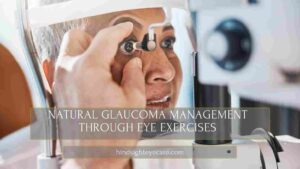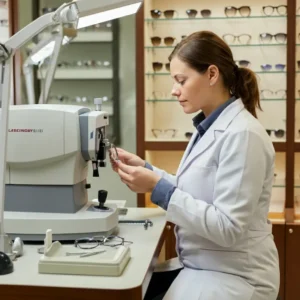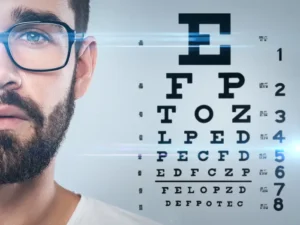An eye exam is a procedure where an eye care professional assesses your vision, eye health, and overall eye function. This non-invasive process is essential for everyone, not just those who wear glasses or contact lenses. If you have certain medical conditions, you may need more frequent eye exams.
Eye exams vary depending on their purpose and the eye care professional conducting them. Here’s a breakdown of the specialists involved:
- Ophthalmologists: Medical doctors (MDs or DOs) who have completed extensive education and training, including medical school, residency, and often additional fellowships. They can perform eye surgeries and manage complex eye conditions.
- Optometrists: Hold a Doctor of Optometry (OD) degree after completing optometry school and, in some cases, a residency. They diagnose and treat a wide range of eye problems but do not perform surgeries.
- Opticians: Though they don’t conduct eye exams, opticians play a crucial role in helping you choose eyewear, fitting glasses, and making adjustments.
Types of Eye Exams
Eye exams can be categorized based on their purpose:
- Routine/General Exams: These are regular check-ups for people without eye conditions or those who only need corrective lenses.
- Follow-up Exams: Conducted after a previous eye injury or procedure or for ongoing monitoring of chronic conditions like diabetes or macular degeneration.
- Medical/Emergency Exams: Necessary when there’s an urgent vision issue, such as an eye injury or sudden vision loss.
Components of an Eye Exam
A comprehensive eye exam consists of 13 parts, each designed to evaluate different aspects of your eye health:
- Visual Acuity: Tests how well you can see, typically using a Snellen chart with letters or symbols.
- Visual Fields: Assesses the full extent of your peripheral vision, detecting any gaps or blind spots.
- Movement and Alignment: Ensures your eyes are properly aligned and can move correctly.
- Conjunctiva: Examines the clear membrane covering your eye’s sclera and inner eyelids.
- Ocular Adnexa: Looks at the external tissues surrounding the eye, such as the eyelids and tear ducts.
- Pupil and Iris: Checks the pupillary reflexes and the overall health of the pupil and iris.
- Intraocular Pressure: Measures the pressure inside your eye, a key indicator of conditions like glaucoma.
For a closer inspection of the internal structures, a slit lamp is used to examine:
- Cornea: The transparent layer covering your eye.
- Anterior Chamber: The fluid-filled space between the cornea and iris.
- Lens: Assesses clarity and any abnormalities.
- Optic Nerve: Evaluates the optic disk and optic cup for signs of damage.
- Retina: The light-sensitive layer at the back of your eye is checked for color changes, wrinkles, or damage.
Preparing for an Eye Exam
For routine or follow-up eye exams, preparation is minimal. However, it’s essential to bring:
- A list of all medications, vitamins, and supplements you take.
- Your current glasses, contact lenses, and previous prescriptions.
What to Expect During and After an Eye Exam
During the exam, your eye care specialist will inquire about your vision, any recent changes, and medical history. The exam includes various tests and measurements, and your specialist may recommend additional tests if necessary.
After the exam, your specialist will discuss the findings, provide a prescription if needed, and explain any follow-up actions. If your pupils were dilated, you might experience temporary light sensitivity and difficulty focusing on close objects. Wearing sunglasses and arranging for transportation are recommended if dilation was part of your exam.
Eye Exam Frequency
Regular eye exams, every one to two years, are crucial for maintaining eye health, even if you have perfect vision. Those at higher risk of eye disease, including individuals over 60, people with certain health conditions, and those with a family history of eye issues, may need more frequent exams.
Conclusion
Eye exams are vital for detecting both eye and brain conditions early, helping you maintain optimal vision and overall health. Regular exams ensure that you can continue to see the world clearly and comfortably as you age.
4o




